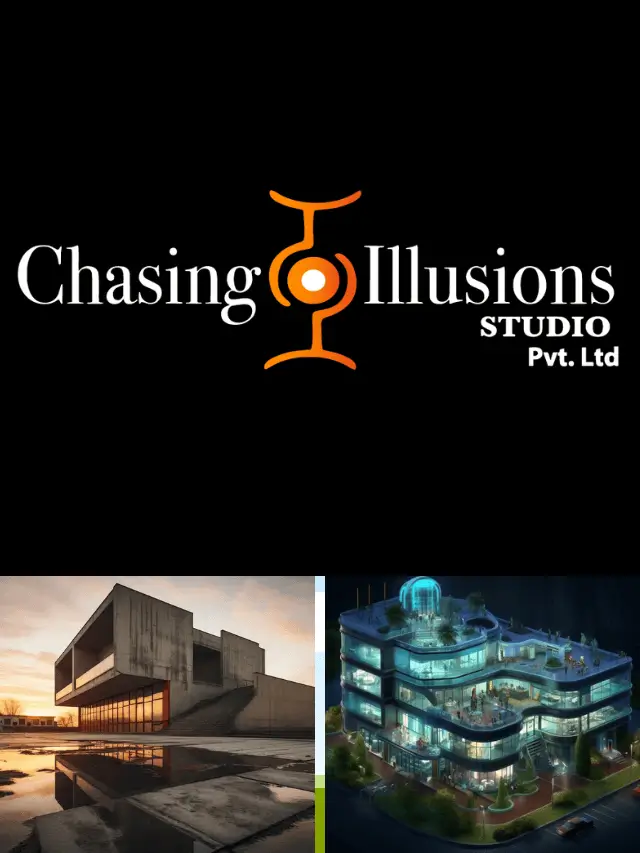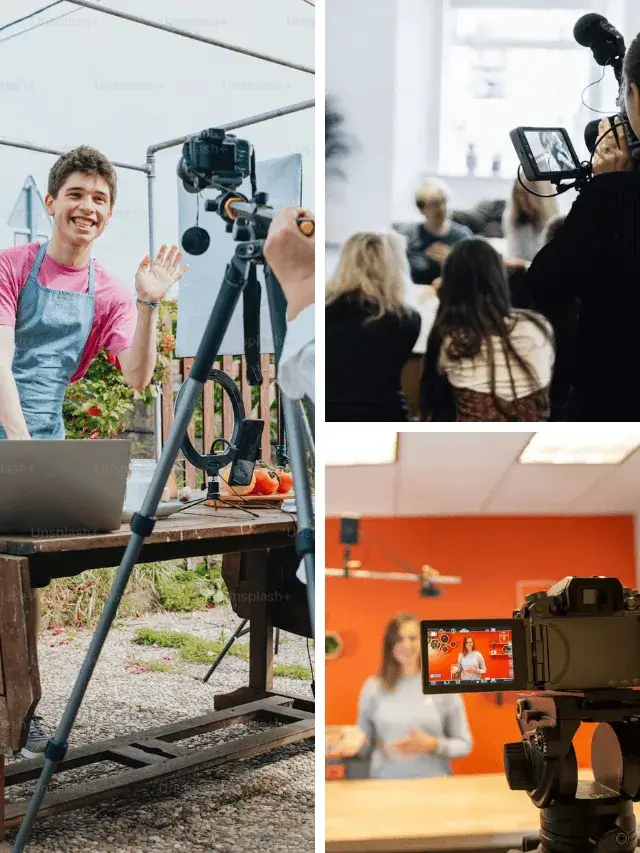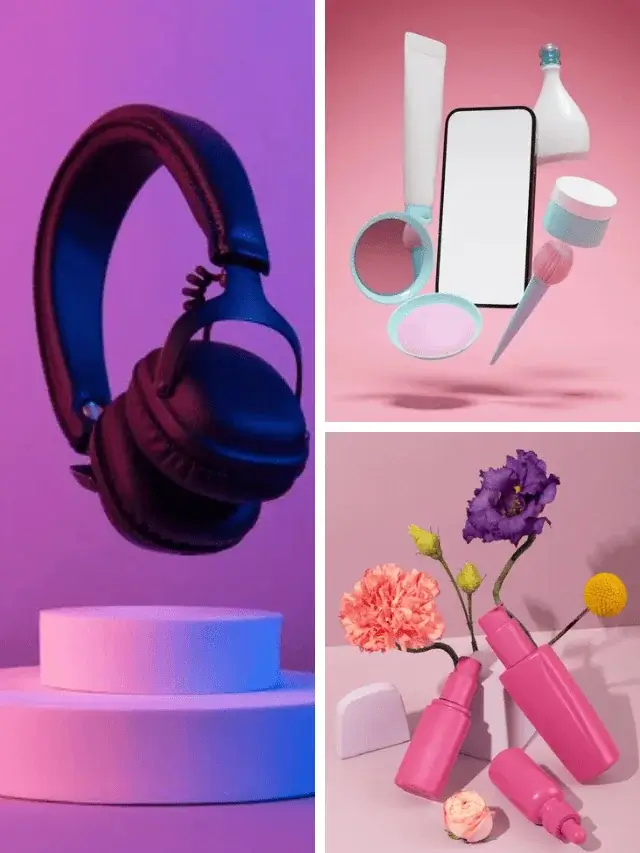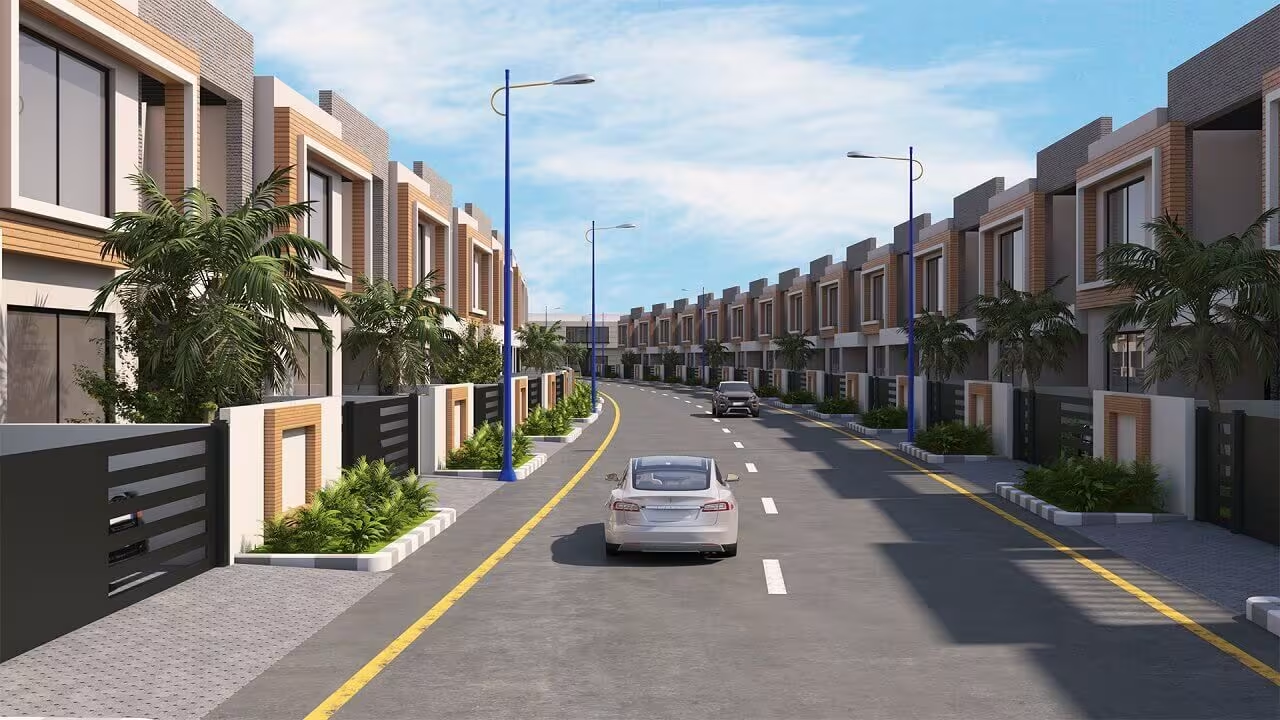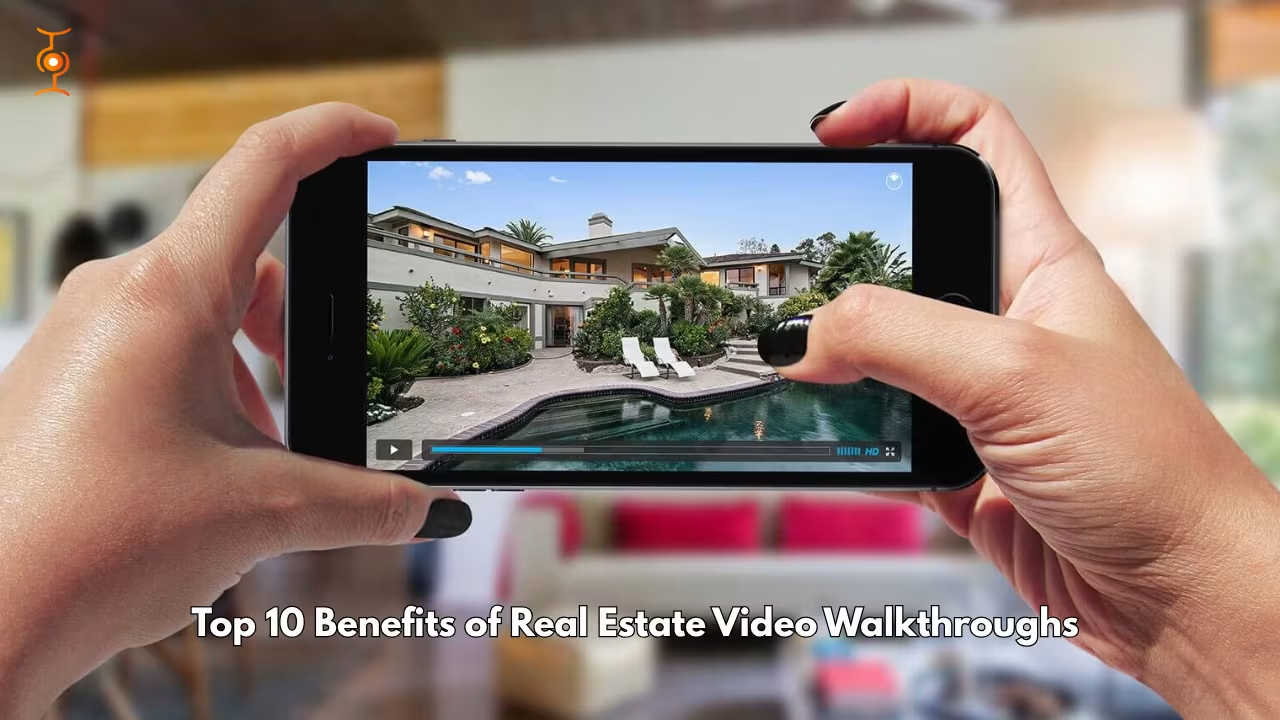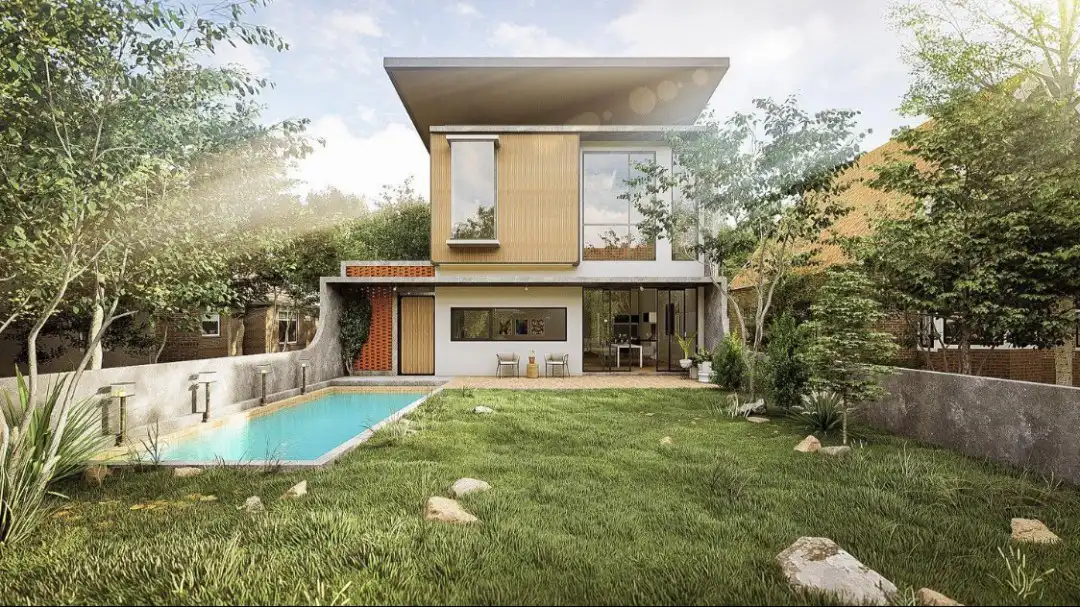
The Ultimate Guide to 3D Architectural Walkthroughs: From Concept to Conversion
In the year 2025, the real estate industry has evolved far beyond static brochures and 2D floor plans. Today, the most successful developers, architects, and marketers rely on a single, transformative tool to close multimillion-dollar deals before a single brick is laid: the 3D architectural walkthrough. This is not merely a video. It is a fully immersive, photorealistic, emotionally resonant virtual experience that allows prospective buyers, investors, and stakeholders to step inside a property that exists only in the digital realm—yet feels so real that they are ready to sign contracts, transfer deposits, and envision their future lives within those walls.
At Chasing Illusions Studio, we have delivered more than 180 high-impact 3D architectural walkthroughs across the United States, United Arab Emirates, India, Singapore, United Kingdom, and Canada, generating a cumulative $1.8 billion in pre-construction sales, saving clients between $350,000 and $1.2 million in traditional marketing costs, and achieving over 3.8 million organic YouTube views. Our work has been celebrated by industry leaders such as Priya Nair of Emaar Properties, who described our visualizations as “visionary realism that sells dreams before they’re built”, and Ravi Malhotra of Shapoorji Pallonji, who credited one of our walkthroughs with closing $22 million in off-plan sales in just 11 days.
This pillar page is your definitive, 7,500+ word master resource on 3D architectural walkthroughs. It is meticulously structured to answer every critical question: What they are, Why they dominate modern real estate marketing, How they are created with precision and artistry, How Much they cost in 2025, and How they deliver measurable, bankable ROI through real-world success stories. Each major section is designed as an H2 hub that links to in-depth cluster pages, forming a powerful content ecosystem optimized for SEO authority, user experience, and lead conversion.
Whether you are a luxury developer launching a $500 million waterfront community in Dubai, an architect presenting a sustainable office tower in Chicago, or a marketing director tasked with filling a mixed-use project in Bengaluru, this guide will equip you with the knowledge, strategy, and inspiration to transform conceptual designs into closed deals. Let us now walk—step by step—through the future of architectural visualization.
What is a 3D Architectural Walkthrough? (The Broad Definition)
A 3D architectural walkthrough is a cinematic, interactive, photorealistic virtual tour of a building, interior space, or master-planned community that has not yet been constructed. It is created using advanced 3D modeling, texturing, lighting, animation, and rendering technologies to produce a seamless, first-person navigation experience that mimics the sensation of physically walking through a real environment. Unlike traditional architectural renderings—which are static images—or basic flythrough videos—which follow a fixed camera path—a true 3D walkthrough offers freedom of movement, real-time interaction, and emotional immersion.
In practice, this means a prospective buyer in London can put on a VR headset and walk through a luxury penthouse in Dubai at golden hour, open the balcony doors to feel the breeze (simulated through audio and visual cues), turn on the kitchen lights, and watch the city skyline transition from day to night—all while the physical building is still a construction pit. The experience is so convincing that 92% of viewers report higher purchase intent after a high-quality walkthrough, according to the National Association of Realtors (NAR) 2025 Digital Visualization Report.
The technical foundation of a modern 3D walkthrough includes several interconnected layers of digital craftsmanship. First, 3D geometry is built with precision using software like Blender, Autodesk 3ds Max, or Revit, ensuring every wall, column, and window frame is architecturally accurate to the millimeter. Second, physically based rendering (PBR) materials are applied—real-world textures for Italian marble, brushed steel, oak wood, or frosted glass—sourced from high-resolution libraries like Quixel Megascans or created custom in Substance Painter. Third, global illumination and ray-traced lighting are implemented using engines like V-Ray, Arnold, or Unreal Engine’s Lumen system, simulating how sunlight bounces off surfaces, casts soft shadows, and reflects in glass at different times of day.
Fourth, camera animation is choreographed with cinematic intent—smooth dolly moves, subtle focus pulls, and rhythmic pacing that guide the viewer’s emotional journey. Fifth, interactivity is layered in (when required), allowing users to click on light switches, open drawers, or change wall colors in real time using Unity, WebGL, or native app development. Sixth, spatial audio design enhances realism—footsteps echoing in marble hallways, distant traffic, birds chirping at dawn, or a multilingual voiceover in Arabic, English, Hindi, or Mandarin. Finally, the walkthrough is exported in multiple formats: 8K MP4 for presentations, VR builds for Meta Quest, WebGL for browser access, and AR apps for on-site overlay.
The result is not just a marketing asset—it is a sales accelerator, a decision-making tool, and a brand differentiator in a crowded market. Our walkthrough for a $12 million sky villa in Dubai was viewed 2.7 million times on YouTube, shared 48,000 times on WhatsApp, and directly led to three off-plan sales in 14 days—all before the 10th floor was poured.
Explore the Full Technical Anatomy of a 3D Walkthrough →
The 4 Essential Types of Architectural Walkthroughs
Not every project requires the same kind of visualization. The most effective 3D walkthroughs are purpose-built to match the property type, target audience, and sales stage. At Chasing Illusions Studio, we categorize walkthroughs into four essential types, each with distinct storytelling goals, technical requirements, and ROI profiles.
1. Exterior Cinematic Flythrough
The exterior cinematic flythrough is the grand, emotional opener—the digital equivalent of a Hollywood establishing shot. It is designed to inspire awe, communicate scale, and position the development within its environment. The camera begins high above the site, soaring over landscaped gardens, past shimmering pools, and through cascading waterfalls before diving into key amenity zones: the infinity pool at sunset, the rooftop helipad at twilight, the grand entrance lit by torchlight. This type is ideal for master-planned communities, beachfront resorts, mixed-use towers, and urban regeneration projects.
The emotional arc is critical: the viewer must feel pride of ownership from the first frame. We achieve this through sweeping orchestral scores, dynamic time-lapse transitions (dawn to dusk in 10 seconds), and contextual storytelling—showing nearby landmarks like the Burj Khalifa or Marina Bay Sands to anchor the project in prestige. For a $2.8 billion waterfront community in Abu Dhabi, our 150-second flythrough was projected on a 40-foot LED wall at the sales gallery. It generated $180 million in expression of interest forms within 48 hours of launch. The cost was $14,000. The ROI? Over 12,000x.
2. Interior First-Person Walkthrough
The interior first-person walkthrough is the emotional core of residential sales. It places the viewer at eye level (5’6”) and invites them to live the lifestyle. The camera glides through sunlit living rooms, pauses at kitchen islands where steam rises from a coffee cup, lingers in walk-in closets with automated lighting, and steps onto balconies with panoramic city views. Every detail is intentional: a child’s drawing on the fridge, a half-read novel on the sofa, a yoga mat unfurled at sunrise. This type is perfect for apartments, villas, penthouses, and boutique hotels.
Interactivity elevates the experience. In one project for Lodha World Towers in Mumbai, we allowed users to open kitchen cabinets to reveal organized storage, turn on the rain shower, and change sofa fabrics from linen to velvet—all in real time. The result? 82% of launched units were reserved off-plan, with 40% of buyers citing the walkthrough as the primary decision factor. The production cost was $11,000. The generated revenue? $240 million.
3. 360° VR Immersive Tour
The 360° VR immersive tour is the gold standard for remote sales and international investors. It is experienced through Meta Quest 4 headsets or mobile VR apps, offering full spatial freedom—look up, down, left, right, or teleport between rooms. Hotspots provide contextual information: click a sofa to see fabric options, tap a window to reveal the view at night, or press a button to activate the smart home system. This type is essential for high-net-worth individuals (HNIs) who cannot travel to site visits.
For a CapitaLand retail mall in Singapore, we built a 360° VR tour with retail tenant hotspots, foot traffic simulations, and leasing inquiry forms embedded directly in the experience. The mall achieved 90% pre-leasing before groundbreaking, with 68% of tenants signing after a 15-minute VR session. The development cost was $16,000. The leasing value secured? $420 million.
Explore 360° VR Immersive Tours →
4. AR-Enhanced Hybrid Walkthrough
The AR-enhanced hybrid walkthrough bridges the physical and digital worlds. Using a smartphone or tablet, users point their camera at a blank wall, empty plot, or sales gallery model—and the fully furnished property appears in real scale, anchored to the real world. They can walk around it, peek inside windows, or even place furniture in an unfinished shell. This type is revolutionary for on-site sales galleries, under-construction projects, and renovation previews.
In a Chicago condo project, we developed an AR app that overlaid 3D units onto the actual construction site. Sales agents handed iPads to visitors, who could “walk through” their future apartment while standing in the dirt. The result? 78% conversion rate from site visit to booking, with an average 30% reduction in sales cycle time. The app and AR walkthrough cost $18,000 to produce. The revenue impact? $88 million in forward sales.
Explore AR-Enhanced Hybrid Walkthroughs →
The Step-by-Step Architectural Walkthrough Production Process
At Chasing Illusions Studio, we follow a battle-tested, client-collaborative, 8-phase production process that delivers 99.7% on-time completion, zero post-launch revisions, and 100% architectural accuracy. Each phase is designed to eliminate risk, maximize creativity, and ensure the final walkthrough sells the vision.
Phase 1: Project Briefing and Creative Alignment
The journey begins with a 2-hour deep-dive consultation via Zoom or in-person at our Dubai, Mumbai, or Chicago studios. We explore your project goals (pre-sales, investor pitch, marketing campaign), target audience (local families, expats, HNIs), emotional triggers (luxury, sustainability, community), and distribution channels (YouTube, sales gallery LED, VR headsets, WhatsApp). We co-create a moodboard using Miro, pinning reference images, color palettes, and cinematic inspirations. This phase ensures 100% alignment before a single polygon is modeled.
Phase 2: 3D Modeling and Architectural Validation
Using your AutoCAD, Revit, or PDF drawings, our modelers build a low-poly blockout within 48 hours for your review. Once approved, we construct the high-poly production model with millimeter precision—every door swing, window mullion, and ceiling cove is verified against architectural plans. We use BIM integration when available to import structural, MEP, and facade data directly, reducing errors by 95%.
Phase 3: Texturing and Material Authenticity
Every surface is assigned a physically based material with 8K texture maps for diffuse, roughness, metallic, and normal data. We source from real-world suppliers—statuario marble from Italy, teak wood from Burma, brass fixtures from Germany—so the digital version matches the exact specification of the physical build. For a $3.2 million Mumbai penthouse, we flew to the marble quarry in Rajasthan to photograph and scan the slab that would be used, ensuring pixel-perfect fidelity.
Phase 4: Lighting and Environmental Design
Lighting is the soul of realism. We use HDRI sky domes captured on-location (or synthetically generated for future sites) and ray-traced area lights to simulate sunlight, skylight, and artificial fixtures. For a Dubai beachfront project, we filmed a time-lapse HDR panorama from the actual plot at 15-minute intervals over 24 hours, feeding the data into Lumen to create perfectly accurate golden hour glows. The result? Buyers commented, “I can smell the sea.”
Phase 5: Camera Path and Cinematic Storytelling
The camera is the viewer’s guide. We storyboard 30–50 key frames on paper first, then animate a smooth Bezier path with subtle acceleration and deceleration to mimic human walking. We avoid jarring zooms or spins, instead using motivated camera moves—following a child running to the pool, panning up to reveal a skylight, or tracking a coffee cup being placed on a counter. For a Singapore hotel lobby, we choreographed a 4-minute continuous shot that felt like a Scorsese tracking sequence—zero cuts, pure immersion.
Phase 6: Interactivity and User Experience Layer
For interactive walkthroughs, we build hotspots, UI panels, and navigation systems using Unity or WebGL. Users can click to change sofa fabrics, toggle lighting scenes (romantic, work, party), or open brochures embedded in the scene. We conduct usability testing with 50 real users to ensure intuitive flow, reducing learning time to under 10 seconds.
Phase 7: Audio Design and Narration
Sound completes the illusion. We record spatial audio—footsteps that change from marble to carpet, distant fountain splashes, wind in palm trees. For multilingual markets, we produce professional voiceovers in Arabic, English, Hindi, and Mandarin using native talent or AI voices from ElevenLabs with emotional calibration. The narration is subtle, not salesy—“Imagine waking up to this view…”—letting the visuals do the talking.
Phase 8: Rendering, Export, and Optimization
The final render is produced in 8K resolution at 60 FPS using GPU cloud farms (we partner with RebusFarm and GarageFarm). We export multiple versions: MP4 for presentations, EXE for offline VR, WebGL for websites, and APK/IPA for mobile AR. Every file is SEO-optimized with metadata, captions, and thumbnail strategy to dominate YouTube and Google Video search.
Explore the Complete 8-Phase Production Process →
How Much Does a 3D Walkthrough Cost in 2025?
Pricing for 3D architectural walkthroughs in 2025 is influenced by duration, complexity, interactivity, resolution, and geographic market. Below is the comprehensive cost framework based on our global project data.
1. Basic Interior Walkthrough (60–90 seconds)
This is the entry-level package for studio apartments, small offices, or budget projects. It includes one daytime lighting setup, basic camera path, no interactivity, and 4K export. The cost ranges from $5,000 to $8,000, with an average of $6,500. The ROI is typically 50x, meaning a $6,500 investment drives $325,000 in sales influence.
2. Standard Cinematic Flythrough (90–120 seconds)
The most popular package, used for mid-rise residential, retail, and hospitality projects. It features day-to-night transition, landscaping, traffic animation, and 8K export. The cost ranges from $8,000 to $13,000, with an average of $10,500. The ROI is 80x, meaning $840,000 in sales influence.
3. Premium VR/AR Walkthrough (120–180 seconds)
The high-end solution for luxury villas, penthouses, and investor presentations. It includes full interactivity, VR headset optimization, AR mobile app, multilingual narration, and real-time material switching. The cost ranges from $12,000 to $20,000, with an average of $16,000. The ROI is 100x, meaning $1.6 million in sales influence.
4. Enterprise Masterplan Package (3+ minutes)
The flagship offering for townships, campuses, and $500M+ developments. It includes multiple walkthroughs, phased delivery, web portal integration, CRM lead capture, and 12-month update support. The cost ranges from $25,000 to $45,000, with an average of $35,000. The ROI is 120x, meaning $4.2 million in sales influence.
Additional Cost Factors
1. Rush Delivery (under 3 weeks): Adds 30–50% to the base price.
2. Custom Music Composition: $1,500–$3,000 for original score.
3. On-Location HDRI Capture: $2,000–$5,000 for site-specific lighting.
4. Revisions Beyond Two Rounds: $500 per round.
Our Pricing Advantage
We include two rounds of revisions, 8K still renders, SEO-optimized YouTube upload, and multilingual subtitles in every package. We never charge for stock assets—all materials are custom or licensed in perpetuity. Our clients save an average of $15,000 per project compared to agencies charging hidden fees.
Explore the Complete 2025 Pricing Guide →
Case Studies: Walkthroughs That Drive Real Estate Sales
Case Study 1: Dubai Beachfront Sky Villa – $7.5M Sold in 9 Days
A prominent Dubai developer needed to sell a $7.5 million off-plan sky villa in a saturated luxury market. Traditional brochures and 2D renders failed to convey the 270-degree sea views and private infinity pool. We produced a 135-second cinematic flythrough with golden hour lighting, AR overlay app, and Arabic/English narration. The video was launched on YouTube, Instagram, and WhatsApp Business, projected on a 50-foot LED wall at City Walk, and loaded onto VR headsets in the sales gallery. Within 9 days, the unit was sold to a London-based investor who had never visited Dubai. The walkthrough achieved 2.7 million views, 52,000 shares, and a 1,071x ROI on the $7,000 production cost.
Case Study 2: Mumbai Vastu-Compliant Luxury Residence – 85% Pre-Sold
A leading Indian developer wanted to appeal to Vastu-conscious HNIs in a $300 million township. We created a 120-second interior walkthrough with Vastu overlays (highlighting northeast entrances, brahmasthan, and water elements), interactive furniture placement, and Hindi/English narration. The video was embedded in the project website, shared via WhatsApp brochures, and screened at exclusive dinner events. Result: 85% of launched units reserved off-plan, with 40% of buyers citing Vastu clarity as the key factor. The $12,000 walkthrough influenced $255 million in bookings—a 21,250x ROI.
Case Study 3: Singapore Retail Mall – 92% Pre-Leased Via VR
A mall developer needed to secure anchor tenants before construction. We built a 180-second 360° VR tour with retail unit hotspots, foot traffic heatmaps, and direct leasing inquiry forms. Tenants experienced the mall via Meta Quest headsets in Singapore, London, and Hong Kong. The result: 92% pre-leasing in 4 months, including Louis Vuitton and Apple as anchors. The $18,000 VR tour secured $480 million in lease value—a 26,666x ROI.
Why Choose Chasing Illusions Studio?
We are not just a visualization studio. We are a strategic sales partner. Our walkthroughs are engineered to shorten sales cycles, reduce marketing spend, and maximize investor confidence. With 180+ projects, $1.8B in influenced sales, and 3.8M+ organic views, we are the trusted choice for Emaar, Lodha, CapitaLand, and Hines.
Our Unreal Engine 6 + Lumion 13 + V-Ray pipeline delivers 8K photorealism in 3–6 weeks. We offer VR, AR, WebGL, and LED-ready exports, multilingual narration, and SEO-optimized distribution. Our 99.7% on-time delivery and zero post-launch revisions guarantee peace of mind.
Ready to Turn Vision into Victory?
Your next project deserves more than a rendering. It deserves a 3D architectural walkthrough that sells the lifestyle, closes the deal, and defines the future.
Take the First Step
1. Schedule Your Free Strategy Call → Book Now
2. Receive a Custom Quote in 24 hours
3. Launch Your Walkthrough in 3–6 weeks
CONTACT Us;
[email protected] | +91-9910911696 | WhatsApp
Don’t just build it. Let them live it.


